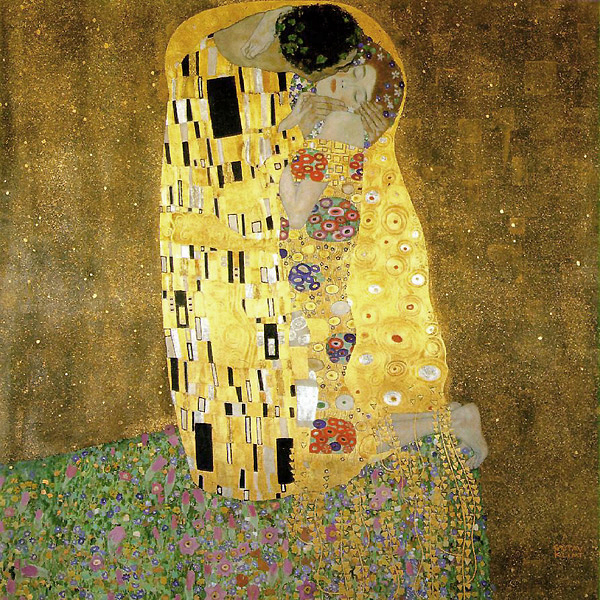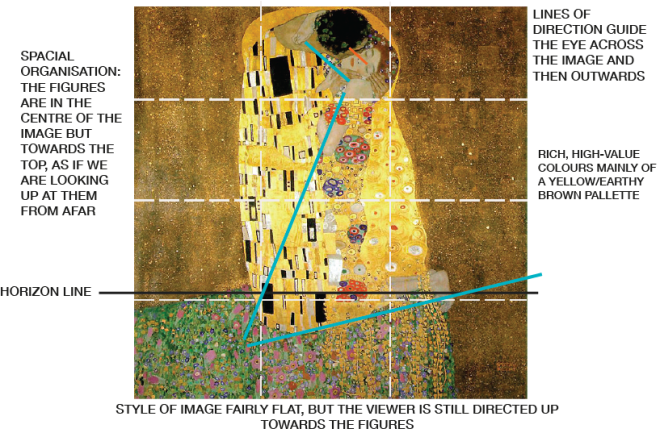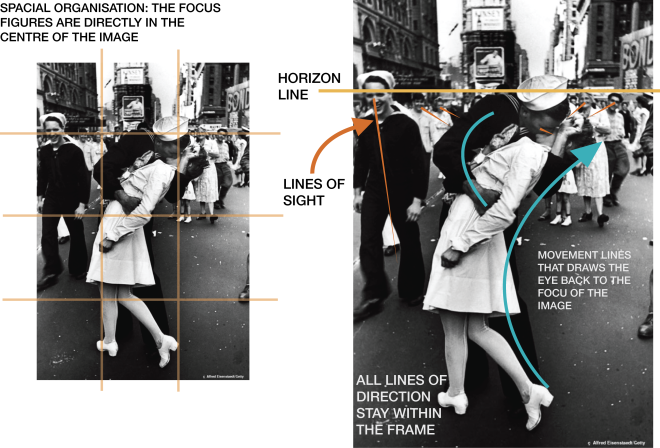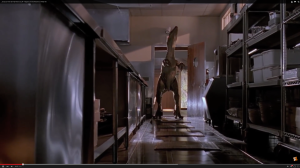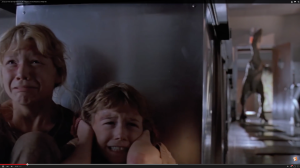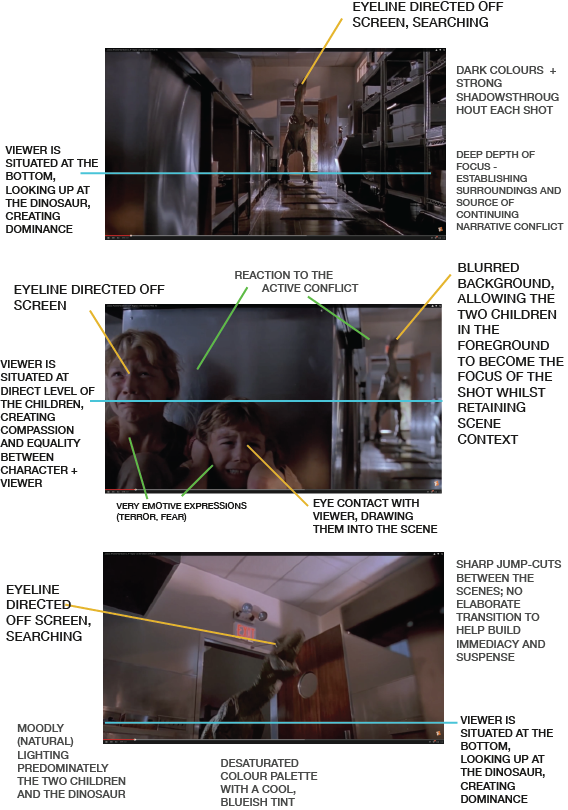Student Name: Jess Vandersande n9168214
Date of post: 27/08/15
Topic + Lecture Week: CI Analysis and Image Annotation, WK2
IMAGE ONE
Contextual Information:
Artist – Gustav Klimt
Title – The Kiss
Year of creation -1909
Dimensions – 180 x 180cm
Collection/source –
Medium – oil on canvas
Genre – Fantastical Portrait
Style – Art Nouveau
Image URL / origin – http://www.klimt.com/en/gallery/women.html
Content – A couple locked in intimacy, embracing in a field of flowers.
Compositional Interpretation Analisys:
Very high saturation of a yellow hue. Warm, bright colours.
The painting utilises a warm colour palette consisting mainly of yellows with a high hue and saturation. Detailed subjects in the foreground, contrasted against a flat, minimalistic background, ensuring that focus remains on the two figures. Spatially, they are at the centre of the painting, suggesting that the importance of their interaction is to be the viewer’s focus.
The majority of the expressive content in The Kiss can be found in the two figures; their embrace appears tender but needing, as if the figures are desperately clinging to each other.
IMAGE TWO
Contextual Information:
Artist – Alfred Eisenstaedt
Title – Kissing the War Goodbye / V-J Day In Times Square
Year of creation – August 14, 1945
Collection/source –
Medium – B&W film
Genre – Photography
Style – Art Nouveau
Image URL / origin – https://en.wikipedia.org/wiki/V-J_Day_in_Times_Square
Content – An American sailor kissing a nurse in New York Times Square as those in the surrounding parade celebrate the ending of the war. Those around them celebrate and are caught up in the moment unfolding in front of them.
Compositional Interpretation Analisys:
The focal point of this image is created by the kiss of the soldier and the nurse in the foreground, and is contrasted with the busy background of secondary figures that are slightly blurred. Every figure’s line of sight is directed towards the kissing people. There is distinct, joyous movement in the image, embodied mainly in the slight swing of the couple, creating a direction of eye-line that guides the viewer down the middle of the image.
The lighting of this image natural, and has created strong shadows and highlights that further draws attention to the focal point of the image. The nurse’s clothing and skin is almost completely white, as opposed to the dark clothes of the sailor.
The expressive content in this image is of joy and celebration; the way in which the two figures embrace in an unexpected celebratory kiss, and the happiness that can be seen in those around them that are witnessing.
Comparative Analysis:
